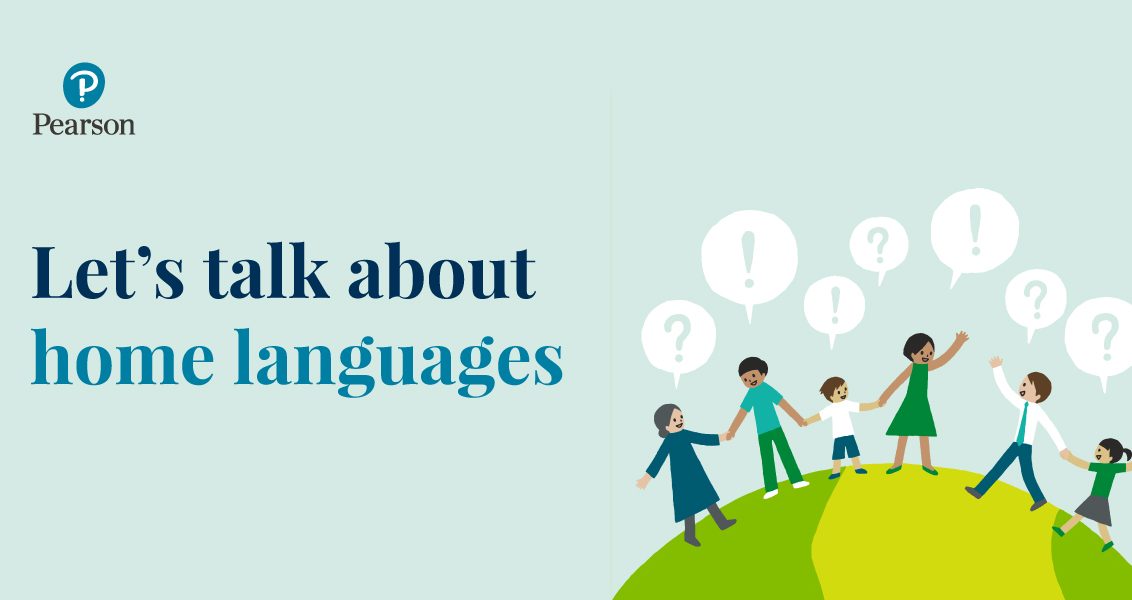
How can we change the pattern of choosing higher-status languages over the natural mother tongue? Explore how parents, teachers and policy makers can make a difference to language priorities.
When I was in Hong Kong, meeting with parents and teachers, the subject of discussion was often Hong Kong parents choosing to speak English with their children rather than Cantonese. Inevitably, someone would ask how we can change this pattern of choosing the higher-status English over the natural mother tongue of Cantonese-speaking Hong Kong families. It’s certainly not a problem unique to Hong Kong, I’ve had similar discussions about Arabic in the UAE, Kiswahili in Kenya, and Dutch in international schools in the Netherlands, to name just a few. Although these languages and situations may seem unrelated and distant, in fact, the pathways to making a difference are very similar.
How can families make a difference?
Make sure you are addressing the various languages in your family and your environment with your children, and having positive discussions about the role of each. No matter how long you will be in a country, and whether or not you personally choose to learn any of the language, you can make a difference for your child by being positive about their opportunities to learn and use another language, albeit only briefly. Model positive attitudes about all languages, whether you can speak them or not, and model making an effort to communicate with others – we can all learn to say “Hello, how are you?” or “Thank you” in other languages, and if we expect it of our children we should surely be willing ourselves.
If you are a parent passing on a minority or low-status language, be firm in your own belief about the usefulness and benefit of your language, and pass this belief on to your children. They need to know that their parents’ languages have value, no matter what other people say, and they will be able to use these languages to access their own heritage. Praise them for their efforts in using multiple languages, and acknowledge the hard work they are doing!
How can teachers make a difference?
Show, through your words and actions, that all the languages of the children in your classes are equal in value and status. Practice language-integration in your classroom, by varying the language of greetings and other classroom routines. If children are unable to answer questions or respond in the school language, let them do it in their own language and then use the resources available to you (other students, teaching assistants, technology) to translate the answer if necessary. In areas where the local language is perceived as being of lesser status than the school language, address this issue in class, to let the children know that you value their language and support them in continuing to use and grow in that language.
How can administrators and policy makers make a difference?
Create in-school (and community) environments in which language diversity is celebrated rather than discouraged or shamed. Provide staff (teaching and support) with adequate professional development to understand bilingualism in development and how to support students who are learning language while also learning content in the classroom. If “every teacher is a language teacher” in your school, make sure you are giving the teachers the knowledge and tools they need to fulfil that role. Create a school language policy that is inclusive rather than exclusive, and that creates spaces in the school for the students to develop their home languages as well. This can be metaphorical space, in the classrooms, or physical space, for home language/mother tongue teaching. And when staffing these programs, ensure that the pedagogy and methodology of these lessons is a good fit for the mission and vision of the school and the daily school experiences of the students – the quality of the programs and the alignment with the school curriculum sends a powerful message to students and families about the value of their languages.
And finally, the most difficult aspect… Carefully consider the value of language-based requirements for school entry. Many parents make decisions about language use with their children based on what school/schools they hope to have them attend. However, a child who “speaks English” at home with their parents (who are not fluent speakers of the language) is not necessarily better equipped for success in an English-language school than a child who speaks no English but arrives at school with a well-developed home language/mother tongue (and the latter child is easier to provide support for in many ways).
How can the government make a difference? (Why not aim high?)
Have knowledge about language development, bilingual language development and the importance of home languages/mother tongue as a fundamental part of any support or information you provide for parents and parents-to-be. Ensure that all professionals who work with young families (paediatricians, nurses, child care workers, etc.) also have accurate information about these topics, so they can advise parents accurately; they are the front-line for parental support and they need to be able to convince parents to make the right decisions. Engage the community in discussions on language use and development – blog, tweet, spread the word in whatever ways work in your community. The more knowledge and support parents, educators, and professionals, have about language development and bilingual language development, the more the children in your communities will become successfully bilingual and able to participate fully in education and society.
The bottom line is that in complex language situations, there is no one stakeholder who can make all the difference. Each parent, teacher, administrator, or policy maker, has a role to play in changing the linguistic landscape to create together an environment in which the language priorities for children – parents’ languages, school language(s), community language(s), other languages – are clearly understood and supported.
About the author
Eowyn Crisfield is a Canadian-educated specialist in bilingualism, bilingualism in education, and teacher-training. She holds a B.Ed. in Teaching English as a Second/Foreign Language, and a Master of Arts in Applied Linguistics, with specialisations in language learning and teaching, and bilingual education. Eowyn has over 20 years of experience in the field of Applied Linguistics, and has a background that covers research, teaching and teacher-training, and supporting bilingual families. She is currently an Associate Lecturer at Oxford Brookes University, lecturing on the Post-Graduate Certificate in Teaching Multilingual Learners and the MA TESOL.

